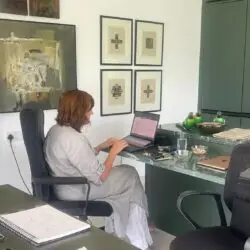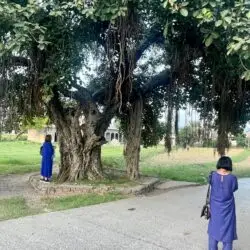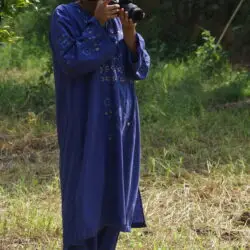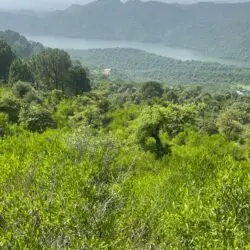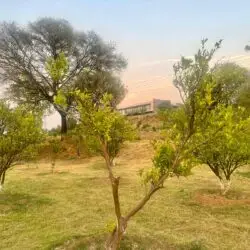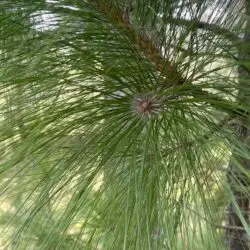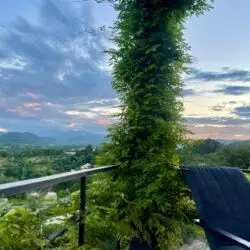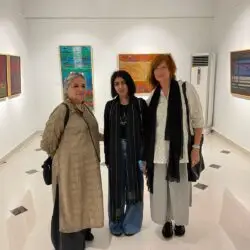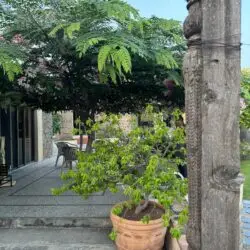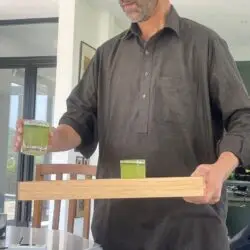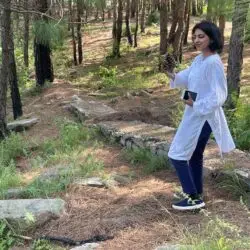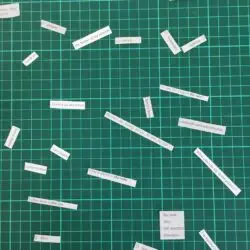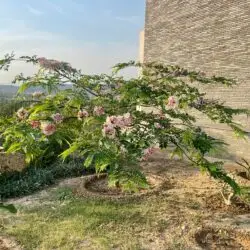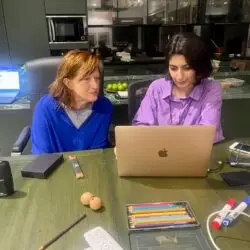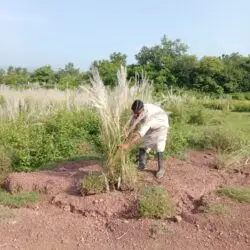RESIDENCY AT GUMCHI BAGH: ARRIVAL
The residency at Gumchi Bagh was the spark that set our project in motion. It struck us as the ideal place to explore themes of biodiversity, sustainable gardening, and the impact of colonialism and postcolonial developments since 1947 in the Rawalpindi area—located in the northwestern part of Punjab, which is also the northern region of Pakistan. The location sits close to a monsoon-influenced zone and experiences relatively high temperatures—at least from a European perspective.
After selecting Sara Aslam as the artist-in-residence, we held several preparatory meetings online. She had already visited Gumchi Bagh, but for me, this would be the first time seeing the place in person—and the first time meeting Sara face-to-face.
I had heard the place described in different ways: a large garden, a small farm, a wild patch of land brimming with possibility. I was excited. While I had previously led a workshop on Poetic Documentary and Sustainability in Bangladesh and encountered some of the region’s flora—similar but still distinct—Pakistan’s natural landscape remained unfamiliar to me. I was curious to see what kinds of plants and environments would greet us there.
The drive from the airport was long, taking us through a shifting collage of suburban scenery: cultivated gardens, mature and newly planted trees, open fields, stretches of wasteland, wild bushes, industrial zones, settlements both old and new, and roadside flowers. The sun felt stronger than in Northern Europe—its light more piercing, making the colours appear more vivid. Everything seemed to glow just a little more.
Gumchi Bagh stretches across a gentle hill, crowned by a house that overlooks the area and is framed by trees. It was there, on the veranda, that I finally met Sara. She had arrived earlier. She and Noorjehan Bilgrami, the host of the house, welcomed me warmly—with a platter of fruit freshly picked from the garden. I was eager to explore. I wanted to get a feel for the place, to see what it looked like, and to imagine what we might create together during the few days ahead.
Because a cobra had been spotted recently, we weren’t allowed to wander alone—at least not on our first walk. The gardeners led the way. From the very first steps, the land struck me as a blend of cultivated care and untamed vitality—a living hybrid of garden, farm, and wilderness.
Roses bloomed beneath old olive trees along the path leading to the house. Below, a small field of tall corn rustled in the breeze. Beyond it, a mixed grove unfolded: lime, avocado, and orange trees scattered among wild grasses and bursts of wildflowers.
One plant in particular caught my eye—tiny, which grew melon-like fruits, no larger than a walnut, speckled with white. I was fascinated. I later learned these were cucamelons. The gardeners, Akmal and Akhlaq, along with Abid, introduced us to a few of the most significant wildflowers growing on the property. One was Plumed Cockscomb (Celosia argentea)—a sun-loving plant that thrives in heat, attracts insects, and can absorb soil pollutants without harming itself, all while being strikingly beautiful. Another was a white variety of Morning Glory (Ipomoea), with delicate blossoms. Next, we got introduced to the Asian Spiderflower (Arivela viscosa), an herb that grows up to a meter tall and as well a sun lover. It provides help for a range of matters. Its leaves can be used as external application to wounds and ulcers and the seeds are anthelmintic and carminative, also described as an antimicrobial agent, to be compared to antibiotics.
As we continued our walk, we passed more cultivated trees: oranges, grapefruits, and ancient olives. Eventually, we reached a wide pond—the water reservoir that seemed to ground the garden’s vitality. Around it, the plant landscape shifted slightly, giving way to more grasses and herbs – and it attracts mosquitos.
Even during that first walk, we were convinced: this was the perfect setting for our project on eco-biodiversity. We got a good first idea how the garden’s themes would unfold over the coming days—already they had begun to reveal themselves as distinct chapters in the making.
PROFESSOR KERSTIN STUTTERHEIM – MENTOR

